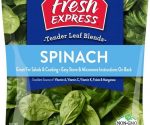Food stamps — now $7 a day — are set to get chopped
[ad_1]
Soon after the pandemic shuttered the U.S. economy, food banks were overwhelmed by demand, with cars lined up for miles as people in need waited to pick up groceries. As the hunger crisis worsened, the federal government stepped in to increase food stamp benefits.
Now that enhancement is set to expire at the end of September, just as many states are also rolling back an additional boost to food stamp payments. The extra funding has helped expand the daily food stamp benefit to $7 per person, up from $4 before the public health crisis, according to Ellen Vollinger, the legal/food stamp director at the Food Research & Action Center, or FRAC, an anti-hunger nonprofit group.
Minus the extra 15% in benefits, a typical food stamp payment falls short of low-income meal costs in 96% of U.S. counties, according to an analysis from the Urban Institute, a centrist think tank. The rollback in benefits comes amid ongoing financial hardship and uncertainty over the economic recovery as the COVID-19 Delta variant ripples across the nation.
Food stamp recipients have benefited from the 15% boost as well as additional state emergency funding of the program, with both sources of increased money lifting the benefits to $7 per person per day, FRAC says. But some states are also cutting their emergency funding for food stamps, heightening the risk that benefits will fall short for some families.
Cutting back food stamp benefits to the previous $4 a day — the equivalent of $1.33 a meal — could increase economic insecurity for vulnerable Americans, experts say.
“$4 a person a day doesn’t do it for a diet that will give you all of the healthy choices you want,” Vollinger said. “There will be real hardship on October 1 if there isn’t something done to mitigate it.”
Estimating the exact level of benefits come October after the 15% enhancement ends is hard because a range of other factors come into play, including whether a state will continue providing more generous payments via emergency funding, Vollinger said.
Tens of millions on food stamps
Food stamp enrollment has swelled during the pandemic. In April, more than 42 million people were enrolled in the Supplemental Nutrition Assistance Program, or SNAP (the official name for the program), according to the latest government data. That’s up 15% from February 2020, just prior to the pandemic, and about 1 in 8 Americans are now on food stamps.
Joel Angel Juarez/Bloomberg
The 15% federal boost in funding for food stamps may not sound like much, but the additional money allows residents in about 60% of counties to afford low-cost meals, the Urban Institute found. Still, that means even with the adjustment, such meals are unaffordable for people in need across much of the U.S.
It’s not only in expensive coastal cities that the additional funding doesn’t go far enough, said Elaine Waxman, senior fellow at the Urban Institute. Many rural counties are still experiencing gaps between food stamp benefits and local food prices, with some located near tourist destinations like national parks or vacation spots. Other rural locations are considered “food deserts,” where it’s difficult to find a variety of fresh foods at reasonable prices, she noted.
In addition to the federal 15% boost, states have approved their own increases in food stamp payments. But states such as Arkansas, Idaho and North Dakota are declaring an end to the emergency, which means those increases are being rolled back.
People on the front lines of fighting hunger are hanging their hopes on a longer term federal reassessment of meal costs for setting food stamp benefits. The U.S. Department of Agriculture, which oversees SNAP, uses a budgetary guideline called the Thrifty Food Plan to determine SNAP payments.
In 2018, the USDA was directed by Congress to reexamine the Thrifty Food Plan to determine whether it actually provided what the agency calls a “realistic, healthy diet.” Anti-hunger advocates express hope the USDA announces a more generous benefit level prior to the expiration of the 15% boost next month.
Requires action from Congress
The USDA doesn’t have the authority to extend the 15% hike in nutritional aid beyond September, an agency spokesperson said, adding that this would require action from Congress. The agency said it is reexamining the Thrifty Food Plan, but hasn’t specified when it will release its findings.
The Thrifty Food Plan, which determines the food stamp benefits provided to families, stems from research in the 1960s to create a budget for a “nutritionally adequate diet for short-term or emergency use,” according to a USDA publication.
Since it was created, the Thrifty Food Plan has been adjusted for inflation, but not for other factors, such as new research into nutrition, variations in local food costs, or specialized diets for people with specific health issues, according to food experts. Under the plan, an adult man should be able to feed himself with $45.60 per week on a diet that includes almost two pounds of beans and about half a pound of beef per week.
The Thrifty Food Plan also assumes people have more than two hours a day to spend on food preparation. Real households on SNAP benefits spend an average of less than one hour a day preparing meals, according to the Center for Budget and Policy Priorities, a liberal think tank.
At the same time, inflation is raising prices at the grocery store, adding to the strain of households trying to budget their SNAP benefits. Families are especially feeling the price pressures for dairy and meat, Waxman said.
“Every time I talk with a mom, they talk about the price of milk,” she said. “A lot of people think meat when they think protein. It makes people feel they can’t put the core things on the table.”
1 in 4 skipping meals
The increased nutrition benefits have helped ease food insecurity, said Julieta Cuéllar, a policy researcher at Propel, a company that runs a financial service app called Provider that helps families on food stamps track their benefits spending.
In a July survey of 5,000 people who use its service, Propel found that the “vast majority are getting something more on top of regular SNAP amounts,” Cuéllar said.
About 34% of respondents reported skipping meals last September, a level that has since declined to about 28%, Cuéllar noted. But that may point to the struggles of affording food amid rising inflation and that the higher SNAP benefits haven’t alleviated all hardship, added Stacy Taylor, head of partnerships and policy at Propel.
Food stamps not only provide meals to families, but also help boost local economies given that low-income households typically spend the funds immediately in nearby stores and businesses. During economic slowdowns, every $1 of SNAP spending translates to more than $1.50 in economic activity, the USDA has found.
The enhanced Child Tax Credit, which started providing monthly cash payments to eligible families with children last month, could help plug the hole in household budgets if the extra SNAP benefits are rolled back, said Waxman of the Urban Institute.
“But [the SNAP benefit rollback] will be very significant for other folks,” she added.
[ad_2]
Source link











